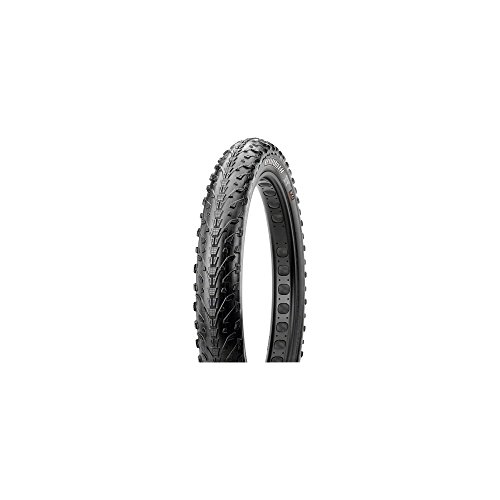Best Cross Country Mountain Bike Tires 2021
Contents
Schwalbe Hans Dampf Snakeskin TL Ready

Maxxis Mammoth EXO Fat Bike Tire

Maxxis Minion FBF Dual Compound EXO

Cross Country Mountain Bike Tires Reviews and Buying Guide
Tyre choice has a big influence on your flight – the majority of road riders prioritise leak resistance and grip in the damp over winter and low rolling resistance come summer season. The wintertime tire can be a design accustomed to decrease the amount of punctures felt by a bike thereby, providing a better grip for that bicycle rider when traveling from the wet. Summer tires are generally created using a soft compound therefore, they could offer lower rolling resistance, which makes them faster and lighter but more in danger of rips and damages. A great set of tires can help you go much faster and be more comfortable while doing so. They may even assist you corner much better too. You can easily get overwhelmed when it comes to choosing which tyres are the best, as there are an abundance to select from. Choosing the right tires for every single situation you may come across on your bike will make sure that can be done more. Whether you ride on rocks, snow, simple trails or trails with every kind of terrain, there’s definitely a tire for you. Bike tires are some of the most important pieces of a bike, so you’ll want to make sure you’ve got the right ones and that you treat them right.
What To Think About When Selecting Best Cross Country Mountain Bike Tires
Inside a perfect world, a bicycle tyre would not really heavy, be resistant to punctures and go very fast, As there is no such tyre, getting a pair of three of those attributes can be what you will need to settle one. The type of riding is eventually what need to determine your tyre option. As an illustration, if nearly all your time is spent traveling on gravel backroads or commuting by using an inner-city road, you will end up more satisfied with a tire designed for protection against punctions than weight and speed. Should you have a tendency to ride on smoother roads which do not contain much debris, the higher option for you may be more lightweight, racy tyres. Proceed to the manufacturer’s webpage or consider the packaging to learn a tyre’s rolling resistance triangle, puncture protection, and where they sit in weight,
- Tires that happen to be wide will be more popular. Where once 23mm rubber was the uniform issue ‘choice’, now 25mm is the norm but many riders go for 28mm to better maximise the added cornering grip and comfort. Wider tires will be more aerodynamic with the right kind of rims. But, prior to you making an investment, it is important to discover the capacity of your frame. Wide tires provides you with a wider patch. A wider tyre can be faster because it minimises a tyre’s rolling resistance by reducing the energy lost to casing deformation. Wider tires works better for the patch. More important to most of us, broader tires (25mm and above) can also be performed at lower pressures to offer a smoother flight.
- Casing – is cloth material ‘woven’ around the beads that produces the primary body of the tyre. While the huge majority usage nylon material, higher-end tires might utilize cotton or silk. The ride quality is quite a bit afflicted with the casing due to threads per inch value (generally known as TPI). A tire having a lower TPI may have greater potential to deal with rolling, an amount that this will pay for being more resistant to punctures and getting thicker treads. High TPI tyres have got a lighter weight and less rolling resistance on the other hand, they have a higher chance of getting punctures.
- Tread on tires is exactly what touches the street. The pattern is normally three-dimensional and it’s thicker compared to the sidewall of your tire. Some feel that tread is just not needed for bike tyres, causing a debate between many. It is really not everything uncommon for tread patterns to offer an excellent amount of mechanical adhesion to the ground because the road surface texture is varied. The rubber compounds utilized for different tires are a carefully safeguarded trick. Generally softer compounds will offer superior traction but will wear quickly, while harder compounds will stand up to more abuse but won’t have the same grip.
- Grip vs Durability – if you’re searching for bike tires, you won’t want to sacrifice too much in rolling resistance or wear. A tire with a softer substance will provide better grip however will use faster. There is much less much traction with harder tyres, though they generally do last longer. In terms of proper balance, the aggressiveness you ride and the sort of terrain you ride on are two crucial factors. An indication of a tyre’s hardness is measured in numbers – the higher the number, the harder the tyre. On one side, a 60a compound may last several seasons as it’s rather durable on the other hand, a 42a compound is much better for corner traction and braking needs replacing every six months. Should you take a look at enough manufacturers, you’ll discover that a lot of them offer multi-compound tires that may be a helpful compromise of these two possibilities.
Additional Factors To Find When You Buy Best Cross Country Mountain Bike Tires
- To make the sidewall, there is rubber which is applied across the side portion of the casing, which is found in involving the tread portion along with the bead. The thickness of your tyre, plus the rubber compounds used is determined by the intended use.
- Sub-tread comes on various types of tires and offers some protection against punctures that you could incur. There are actually outright material and design differences between inexpensive tires versus those who are a little bit more high-end.
Bike tire concepts
- Deterioration on tires happens and it’s vital to monitor the tread. Not only for the life of the tyre, but watching out for stuck glass or flints that haven’t penetrated just yet. Frequent cleanings and inspections will help locate potential issues before you’re on the trail even though there’s always the potential risk of picking up puncture damage in the process, it’s always worth
- When choosing tires, you are purchasing the quality, weight, construction and rubber which can be all vital to tires. Less expensive alternatives tend to lack in grip, leak protection and are usually provided with a heavier, steal bead. Steel rigid tires are heaver and harder to transfer away from the bike than additional options like folding tires. Both hands will not be pleased with you, since getting them on and off the wheel is difficult, however they are indeed cheaper. Although you may feel that a more affordable alternative is okay for you, some tire producers guarantee their compounds work well in a good variety of temperature levels, implying either grip, security or longevity works better throughout the year.
- These treads are all different and meant to be employed for different terrains. It is advisable to buy a tread that is designed for what you will be working with it for. Are you currently still undecided about how exactly you are going to use your bike? If so, consider inverted treads. Although they are not perfect for all areas, they are ideal for casual riders and those that like riding in numerous terrains.
- Size and width of your tire aren’t often varied. It is essential to understand that narrow tires when you want to be on a straight path while going fast, while wide tires are ideal for turns and gripping. The tire type you choose should depend on where you may be using them and what you would be utilizing them for.
Conclusion
Bike tires come in a range of different designs, features, and something design or brand can be very different from another. It all depends upon irrespective of where you are riding, the right tires are very important. Once you’ve considered what’s most essential for your like puncture-resistance, speed, or pricing, then you could compare each tire’s features and prices to determine the very best custom made to suit your needs.
